Matt Rees's Blog - Posts Tagged "james-ellroy"
Why's a Palestinian sleuth in Brooklyn?
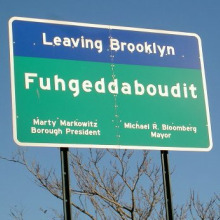 I’ve been called the Dashiell Hammett of Palestine, the John Le Carre of the Middle East, the James Ellroy of…Palestine, the Graham Greene of Jerusalem, and the Georges Simenon of the Palestinian refugee camps. Depends which review you happen to have read.
I’ve been called the Dashiell Hammett of Palestine, the John Le Carre of the Middle East, the James Ellroy of…Palestine, the Graham Greene of Jerusalem, and the Georges Simenon of the Palestinian refugee camps. Depends which review you happen to have read.Until now I’ve published three novels about Omar Yussef, my Palestinian schoolteacher/sleuth. Omar has been described as the Philip Marlowe of the Arab street, the Hercules Poirot of the Near East, Sam Spade fed on hummus, and Miss Marple crossed with Yasser Arafat.
Why then is my new Omar Yussef novel THE FOURTH ASSASSIN,/a> set in New York City? Not in the Middle East, the Near East, Palestine, the Levant, the Fertile Crescent, or any other place where Yasser may be fornicating with dear old Miss Jane Marple.
I lived in New York six years, until I came to Jerusalem in 1996. I know it better than any city outside the Middle East. I had a lot of fun in New York. Maybe too much fun. In no other place in the world can a young man so overindulge in the temptations originally offered in the city of Sodom. Which in reality is close to where I live now in Jerusalem. Though you wouldn’t know it to look at the place.
I know New York with my eyes closed. Literally. In my twenties, after leaving some bar or club, I blacked out on every line on the subway map.
I dated women from every borough of the city, from Westchester and upstate. From the 201 area code (dare I say, New Jersey.)
I married a girl from the North Shore of Long Island, and in my continuing effort to know New York in all its facets, when we divorced, I married a beautiful woman from the South Shore of Long Island.
But each time I returned, no matter how well I thought I knew the place, New York seemed different. The change became most apparent after 9/11. I wanted to understand it through the eyes of Omar Yussef.
That’s why he finds himself in Brooklyn in THE FOURTH ASSASSIN. Visiting the area of Bay Ridge that has become known as “Little Palestine,” for the influx of Palestinian immigrants.
Little Palestine isn’t a community of Palestinian intellectual émigrés, such as sprang up in European capitals in the 1970s. It’s a new wave of young men mostly, saving to bring their families over, working two or more jobs. Theirs is a typical American immigrant story.
Except for the FBI agents going through their trash.
The Bureau didn’t uncover any broad conspiracy in Little Palestine. But it did add to the tensions between the Arab community and other New Yorkers after the attack on the Twin Towers.
That’s the situation into which I wanted to place Omar Yussef. Mutual distrust, after all, makes for good crime fiction.
In Brooklyn, it also happens to be real.
Published on February 11, 2010 23:51
•
Tags:
bay-ridge, brooklyn, crime-fiction, dashiell-hammett, fbi, fertile-crescent, georges-simenon, graham-greene, hercules-poirot, james-ellroy, jerusalem, levant, little-palestine, long-island, middle-east, miss-jane-marple, miss-marple, near-east, new-jersey, new-york, omar-yussef, palestine, palestinians, philip-marlowe, sam-spade, the-fourth-assassin, upstate-new-york, westchester-county, yasser-arafat
Writing crime fiction: Readers want someone else's fear, not their own
Writers must find the fears that titillate, rather than terrify.
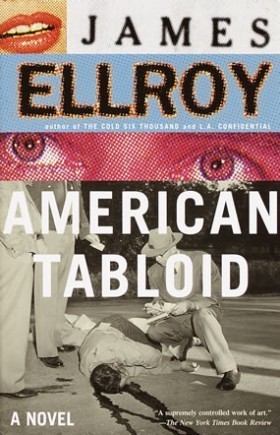 Americans fear public speaking and clowns. (Check out the polls. It’s true.) Surprisingly, they don’t fear being murdered by a psychopath or caught up in a case of mistaken identity which leads to them be pursued by the FBI.
Americans fear public speaking and clowns. (Check out the polls. It’s true.) Surprisingly, they don’t fear being murdered by a psychopath or caught up in a case of mistaken identity which leads to them be pursued by the FBI.
Surprisingly, that is, if you read thrillers.
Crime novels don’t hinge on the fears people confront in everyday life. But six of the current New York Times Top 10 bestseller list are thrillers. Why do so many people read crime novels, if not to experience real fear? You’d better have an answer figured out if you’re going to write a thriller that hits not on people’s true horrors, but on the fears they like to be teased with in literary form.
We can sum up the genre’s popularity this way: our innate conservatism enjoys seeing order disturbed (by murder) and then restored (by nabbing the bad guy.)
Hence the popularity of Scandinavian detective novels. Where else is there such order? The disturbance is consequently great. But we never fear that Wallander or Hole will fail to restore balance, and everyone can head for the sauna with a sense of security.
To prove this, look also at James Ellroy. He has said that his novels are too dark and gritty to have huge sales. His masterpiece American Tabloid has sold less than 400,000 copies. That’s a hell of a lot, of course. But many a lesser thriller writer shifts millions of copies of each book.
Ellroy’s novels are too close to our real fears. I don’t mean clowns. He undercuts the comforting realities of American history. When you read American Tabloid, you can’t help but think that if JFK was such a weak-willed, corrupt poon-hound, maybe all the other myths and foundations of our society are delusions too. There’s no coming back from that. So the sales stay low.
People like to maintain a distinction between fiction and reality.
They recognize the difference between fictional fear and real fear. The shock of 9/11 was, as many witnesses said, that it was “like a Hollywood disaster movie.” Like a fiction. Too much to take in as real. Which is why there was such a backlash against perceived perpetrators. They had killed a lot of people, sure. But they also had shattered our belief in the distinction between reality and nightmare.
Next we’ll try to figure out how to find the fears that titillate, rather than truly terrify. Let me know what fits the bill for you.
Related articles across the web
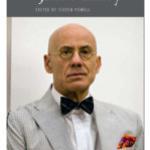 This Changes Everything: Ellroy and Mallon on the Assassination of JFK
This Changes Everything: Ellroy and Mallon on the Assassination of JFK
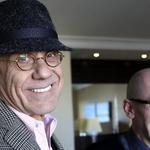 James Ellroy and David Peace: History Repeats Itself
James Ellroy and David Peace: History Repeats Itself
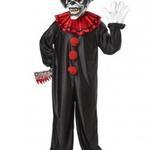 Evil Clown Costumes a Cause of Coulrophobia
Evil Clown Costumes a Cause of Coulrophobia
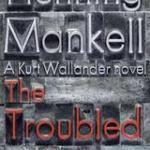 No: 739 The Troubled Man by Henning Mankell
No: 739 The Troubled Man by Henning Mankell
 Americans fear public speaking and clowns. (Check out the polls. It’s true.) Surprisingly, they don’t fear being murdered by a psychopath or caught up in a case of mistaken identity which leads to them be pursued by the FBI.
Americans fear public speaking and clowns. (Check out the polls. It’s true.) Surprisingly, they don’t fear being murdered by a psychopath or caught up in a case of mistaken identity which leads to them be pursued by the FBI.Surprisingly, that is, if you read thrillers.
Crime novels don’t hinge on the fears people confront in everyday life. But six of the current New York Times Top 10 bestseller list are thrillers. Why do so many people read crime novels, if not to experience real fear? You’d better have an answer figured out if you’re going to write a thriller that hits not on people’s true horrors, but on the fears they like to be teased with in literary form.
We can sum up the genre’s popularity this way: our innate conservatism enjoys seeing order disturbed (by murder) and then restored (by nabbing the bad guy.)
Hence the popularity of Scandinavian detective novels. Where else is there such order? The disturbance is consequently great. But we never fear that Wallander or Hole will fail to restore balance, and everyone can head for the sauna with a sense of security.
To prove this, look also at James Ellroy. He has said that his novels are too dark and gritty to have huge sales. His masterpiece American Tabloid has sold less than 400,000 copies. That’s a hell of a lot, of course. But many a lesser thriller writer shifts millions of copies of each book.
Ellroy’s novels are too close to our real fears. I don’t mean clowns. He undercuts the comforting realities of American history. When you read American Tabloid, you can’t help but think that if JFK was such a weak-willed, corrupt poon-hound, maybe all the other myths and foundations of our society are delusions too. There’s no coming back from that. So the sales stay low.
People like to maintain a distinction between fiction and reality.
They recognize the difference between fictional fear and real fear. The shock of 9/11 was, as many witnesses said, that it was “like a Hollywood disaster movie.” Like a fiction. Too much to take in as real. Which is why there was such a backlash against perceived perpetrators. They had killed a lot of people, sure. But they also had shattered our belief in the distinction between reality and nightmare.
Next we’ll try to figure out how to find the fears that titillate, rather than truly terrify. Let me know what fits the bill for you.
Related articles across the web
 This Changes Everything: Ellroy and Mallon on the Assassination of JFK
This Changes Everything: Ellroy and Mallon on the Assassination of JFK  James Ellroy and David Peace: History Repeats Itself
James Ellroy and David Peace: History Repeats Itself  Evil Clown Costumes a Cause of Coulrophobia
Evil Clown Costumes a Cause of Coulrophobia  No: 739 The Troubled Man by Henning Mankell
No: 739 The Troubled Man by Henning Mankell
Published on February 11, 2014 03:07
•
Tags:
crime-fiction, james-ellroy, scandinavian-crime-fiction, thrillers, writing, writing-tips



